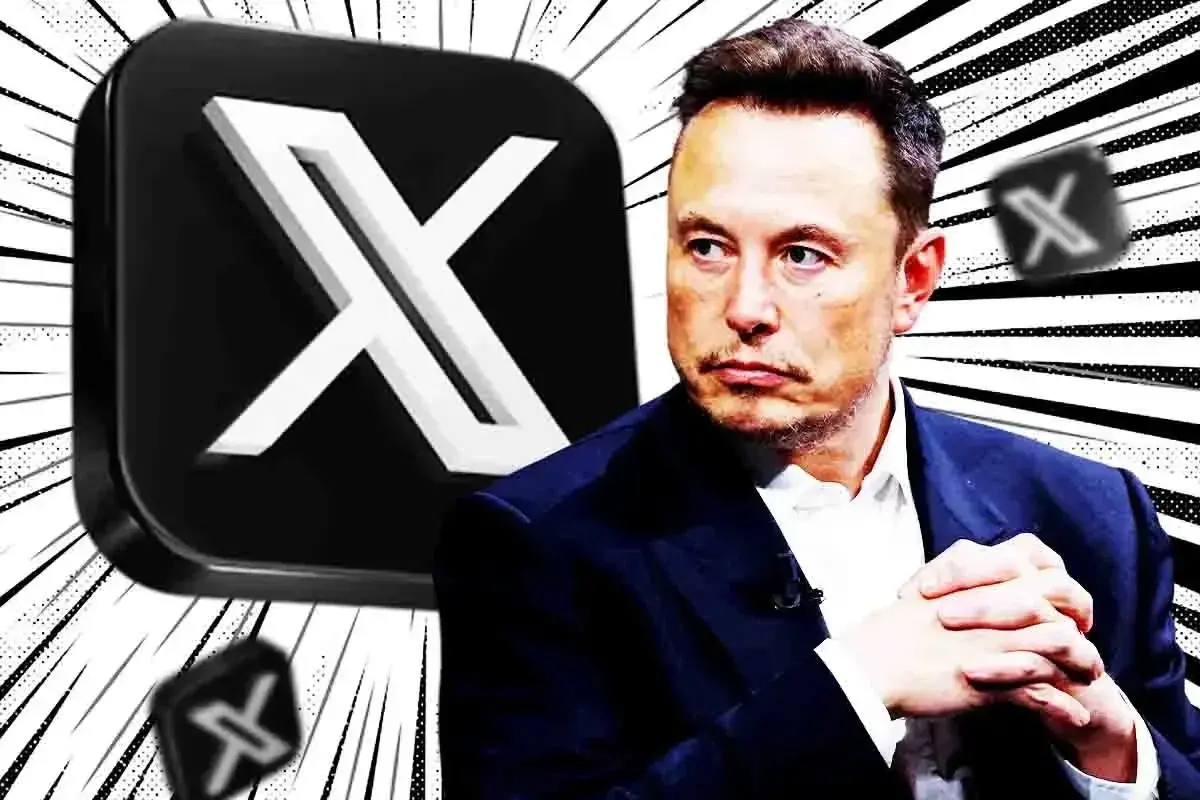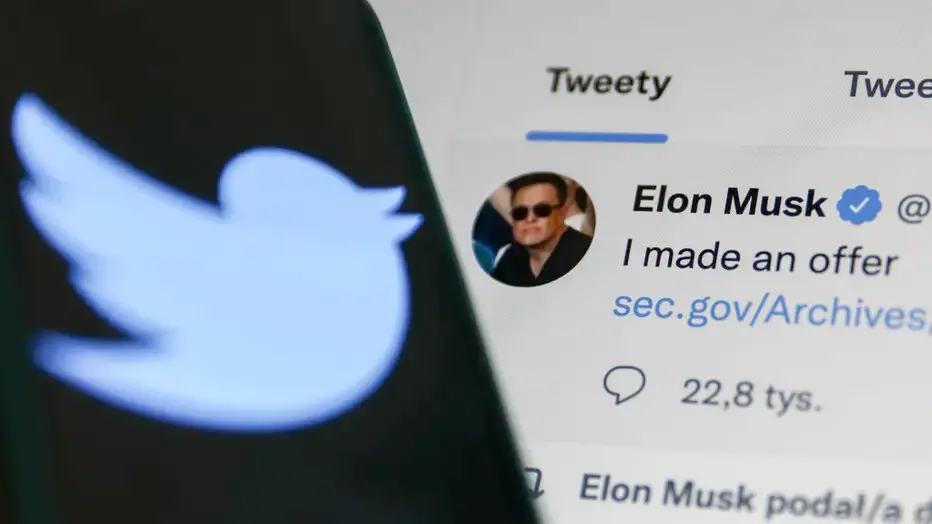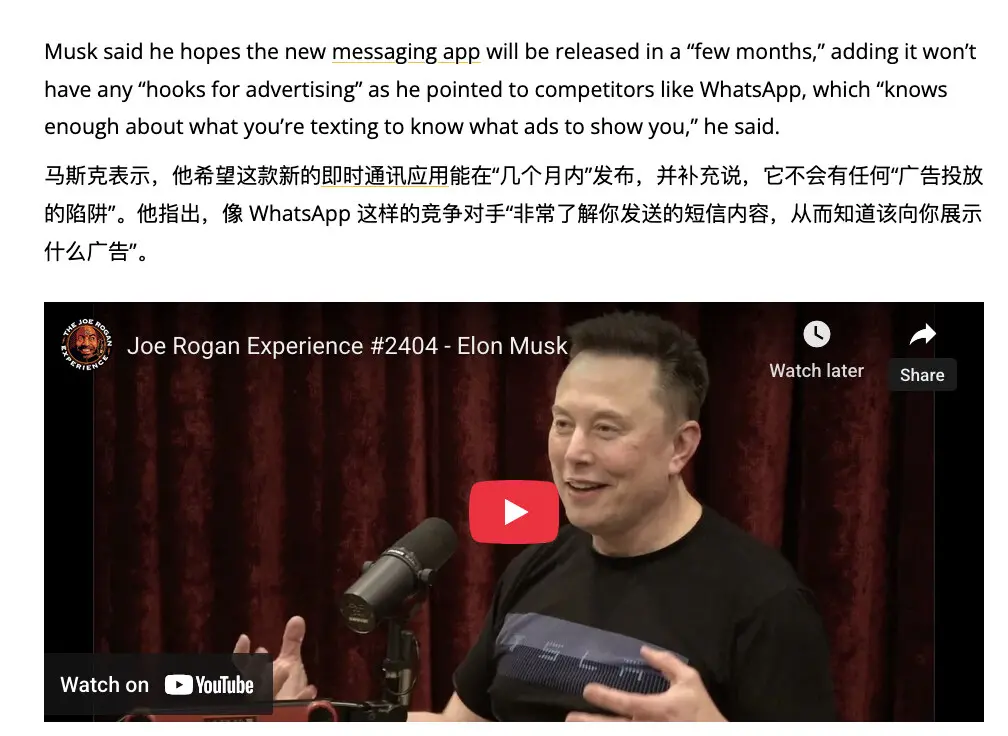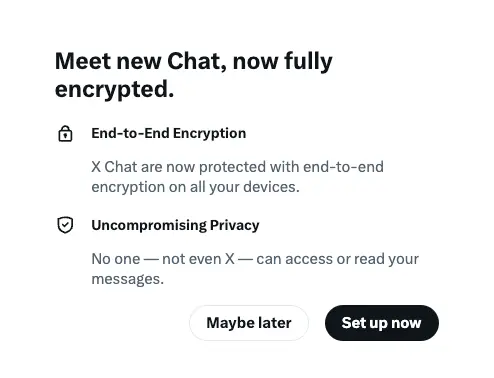Kill the Blue Bird: Can X Chat Become Musk’s “WeChat of the West”?
Introduction: The Transformation from Twitter to X and the Birth of X Chat

If Elon Musk were a fictional character, his story would be full of drama: a billionaire, a tech genius, an ambitious world-changer traversing the stages of electric vehicles, rockets, and artificial intelligence.
In 2022, when he acquired Twitter for $44 billion, the latest chapter of this drama began. Twitter, once regarded as the “digital town square,” became the center of global public conversation due to its 140-character limit. But in Musk’s hands, in less than a year, the blue bird symbolizing global public dialogue was ruthlessly replaced by a cold black “X”—the prototype of a so-called “everything app” in his words.
Now, three years later, the birth of X Chat has become the latest footnote in this transformation—a communication tool with end-to-end encryption, carrying Musk’s obsession with privacy, freedom, and technological integration, while also pushing him into direct confrontation with traditional communication giants.
But for observers on Wall Street and in Silicon Valley, the real question is: Is this truly a communication revolution, or just another high-profile marketing move to cover up X’s advertising revenue woes?
I. Historical Background: Musk’s Love-Hate Relationship with Twitter/X (2022-2024)
The seed of this ambition was planted as early as 2017. At that time, the 46-year-old Musk, busy dating “Aquaman’s Queen,” getting hair transplants, and saving the world, went through many twists and turns to buy back the domain of his “first love company”— X.com This seed grew into a towering tree that swallowed Twitter five years later.
In 2017, Musk spent a fortune to buy back the x.com domain—a digital asset that once belonged to his early startup X.com (which later merged with PayPal). Few realized at the time that this seemingly nostalgic move was actually the prelude to a grander plan. Five years later, when Musk began criticizing Twitter’s content moderation policies, the value of this domain truly became apparent.
The 2022 Acquisition: A Business Thriller of Acquisition and Layoffs?
That year, Musk initially offered to acquire Twitter at $54.20 per share, then tried to back out, but ultimately completed the $44 billion deal in October under legal pressure. So, what does this investment really mean?
If converted into aircraft carriers, this amount could build three Ford-class carriers—one of the world’s most advanced and expensive warships, each costing as much as $13 billion. In other words, Musk spent an amount equivalent to building three supercarriers to acquire Twitter—this was the “ammunition” he invested in the acquisition.

After the acquisition, he immediately launched what was called “the most radical corporate restructuring in Silicon Valley history”: over 50% of employees were laid off, including most of the content moderation team. The remaining employees were required to work overtime in a “hardcore work mode.” This aggressive management style dampened morale within Twitter but also significantly reduced labor costs for the company.
Meanwhile, Musk launched the “paid Blue V” subscription model, hoping to achieve profitability through user payments rather than advertising revenue. However, this model sparked widespread controversy, causing many advertisers to withdraw and resulting in a sharp drop in Twitter’s revenue.
Relaxed Content Moderation and Algorithmic Bias: Reality Quickly Hit Musk Hard.
To attract more users, Musk relaxed content moderation policies, even restoring some far-right accounts. While this leniency brought short-term traffic growth, it also led to a surge in hate speech and misinformation, further scaring off advertisers. By mid-2023, Twitter’s brand image had been severely damaged, and user trust had significantly declined. Many well-known advertisers, including Apple and Disney, chose to “reduce or suspend” their advertising on the platform, causing X’s advertising revenue to plummet by more than 50%.
From Twitter to X: Inspired by WeChat, Rebranding the Blue Bird
In July 2023, Musk announced the rebranding of Twitter to “X,” positioning it as an “everything app.” This idea was clearly inspired by China’s WeChat:
He has repeatedly expressed his admiration for WeChat in public (such as at employee meetings and on podcasts), calling it an “excellent app” and a “good model” at the All-In Summit 2022.
WeChat is not only a chat tool but also a payment platform, e-commerce gateway, and content distribution channel. Musk hopes to build a similar super app with X, but the challenges he faces are more complex than those WeChat encountered. Western users’ sensitivity to privacy, strict regulatory scrutiny, and strong competitors are all issues X must address.
Subsequently, the X platform launched video and audio call features that year and began testing payment functions. More importantly, Musk integrated his AI company xAI into the X platform, laying the foundation for X Chat’s AI features. By early 2024, X was no longer just a social media platform but an evolving digital ecosystem.
II. Development Trajectory: The Evolution of X Chat from Concept to Launch (2024-2025)
Just as X platform’s advertising revenue was puzzling Wall Street analysts, the usually low-key direct messaging feature in Musk’s “digital harem” stood out. Once a supporting role, it was about to become independent, crowned as “X Chat.”

In September 2024, Musk first hinted on the X platform that public posting and direct messaging would be separated, with direct messaging becoming a more secure and focused communication tool. Users could use X solely for private messaging. This statement sparked endless speculation about X Chat.
On June 1, 2025, the beta version of X Chat was officially launched, opening for testing to some users. This tool features end-to-end encryption, disappearing messages, file sharing, and audio/video calls, claiming to use a decentralized encryption architecture similar to Bitcoin. On October 20, X Chat v0.1 entered public beta, attracting millions of users to try it out. By the end of October, Musk officially announced plans to spin off X Chat as a standalone app, adopting a Bitcoin-like P2P encryption architecture and making it clear that it would challenge traditional communication giants like WhatsApp and Signal.
The key timeline is as follows:
- September 11, 2024: Musk hints at “decoupling public posting and direct messaging,” allowing users to use X solely for private messaging.
- June 1, 2025: X Chat beta integrated version rollout. Musk posts: “Brand new X Chat launched, supporting encryption, disappearing messages, arbitrary file sending, and audio/video calls. Built on Rust, using Bitcoin-style encryption, completely new architecture.”
- October 20, 2025: v0.1 public beta. Musk encourages trial: “Try 𝕏 Chat, our encrypted communication system supporting text, file transfer, and calls. Enable from the left menu.”
- October 31, 2025: Privacy feature update, and on the Joe Rogan podcast, Musk reveals the standalone app will launch “within the next few months,” emphasizing P2P encryption and payment integration with Visa.

Source: Youtube
III. Core Features and Technical Highlights: Privacy-First “Bitcoin-Style” Innovation
X Chat’s first protective charm is a set of so-called “Bitcoin-grade” encryption armor.
The core of X Chat lies in privacy protection, which is fully reflected in its encryption technology. It adopts end-to-end encryption (E2EE), a decentralized encryption technology similar to Bitcoin, essentially a ‘peer-to-peer encryption (P2P)’ architecture, ensuring that only the communicating parties can decrypt messages and no third party can eavesdrop.

To further enhance security and operational efficiency, the development team chose Rust, a modern programming language known for high performance and security, to rebuild the entire communication module, thereby reducing potential security vulnerabilities. Even more surprising, X Chat claims not to collect user metadata—a stance that is rare in the data-driven tech industry.
In terms of functionality, X Chat covers all the essentials of modern communication tools: disappearing messages allow users to set automatic destruction times for chat records; file sharing supports single file transfers up to 2GB; audio and video calls integrate xAI’s real-time voice optimization technology, ensuring low latency and high clarity. Additionally, X Chat is seamlessly integrated with the X platform, allowing users to share posts or media content directly in chats. This “platform + communication” model is considered a key part of Musk’s “everything app” strategy.
From the perspective of crypto industry observers, the upcoming release of X Chat is far more than a product showcase—it’s more like a “new narrative bomb” for the entire industry. Its Bitcoin-like encryption design essentially brings blockchain-level security standards into everyday communication tools—a move that could drive more attention to privacy coins in privacy payment scenarios. Even more intriguing, there is a subtle “chemical reaction” between X Money’s built-in payment feature and the x402 payment protocol launched by Coinbase in May 2025: the former supports crypto tipping, while the latter is designed for instant micropayments by AI agents.
If these two really merge, then AI-driven privacy payment scenarios will no longer be just talk. Of course, the most direct beneficiary may still be Dogecoin—after all, in Musk’s business landscape, this “Shiba Inu” has never lacked a role.
IV. Challenges and Controversies: The Internal and External Dilemmas Facing X Chat
The road for a new contender is never smooth: reality brings its own storms.
Technically, although X Chat’s end-to-end encryption has won applause from privacy advocates, its P2P architecture’s stability in high-concurrency scenarios remains to be tested. During the 2025 public beta, some users reported message delays and disconnections, raising doubts about whether it can withstand the pressure of a global user base.
In the market, X Chat faces fierce competition: WhatsApp has over 2 billion users, Signal attracts countless fans with its privacy focus, and Telegram has established itself among high-freedom users with its channels, large groups, and anti-censorship features. How Musk will break through in this red ocean remains uncertain.
Even more challenging may be the issue of trust. Since Musk took over, the X platform has been repeatedly criticized for data privacy and content moderation issues.
Although X Chat promises not to collect metadata, user trust in Musk himself is mixed. Some critics sharply point out: “How can a platform that lives on advertising revenue truly prioritize privacy?” In addition, regulatory pressure cannot be underestimated. The EU’s MiCA Act and US privacy legislation may pose challenges to X Chat’s operating model, especially regarding data storage and cross-border transmission.
V. Future Outlook: Can X Chat Become the “Western WeChat”?
So, can this much-anticipated “newcomer” ultimately be crowned with success?
Musk has never hidden his envy of the WeChat model: a super app integrating communication, payments, social, and services. If X Chat can successfully become independent and deeply integrate with X platform’s payment, AI, and content ecosystem, it may become the prototype of a “Western WeChat.”
However, cultural and market differences may become obstacles. WeChat’s success is inseparable from China’s highly centralized mobile internet ecosystem and users’ reliance on a single app, while Western users are more accustomed to decentralized functional apps.
In addition, the contradiction between X Chat’s privacy promises and commercialization needs remains unresolved: if advertising or paid features are introduced, will the platform deviate from its “privacy-first” original intention? The birth of X Chat is not only a key step in X platform’s transformation but also a bold challenge to the modern communications industry. Whether it can find a balance between privacy and functionality, and whether it can stand firm amid competition and regulation, remains to be seen.
But one thing is certain: even if Musk’s blueprint cannot be fully realized, the very existence of X Chat has already changed the rules of the game. The future of the communications industry may not be dominated by a single super app, but rather by fierce competition among major platforms in privacy, functionality, and user experience.
Ultimately, the beneficiaries will be global users—and this may be the greatest value X Chat brings.
Original link